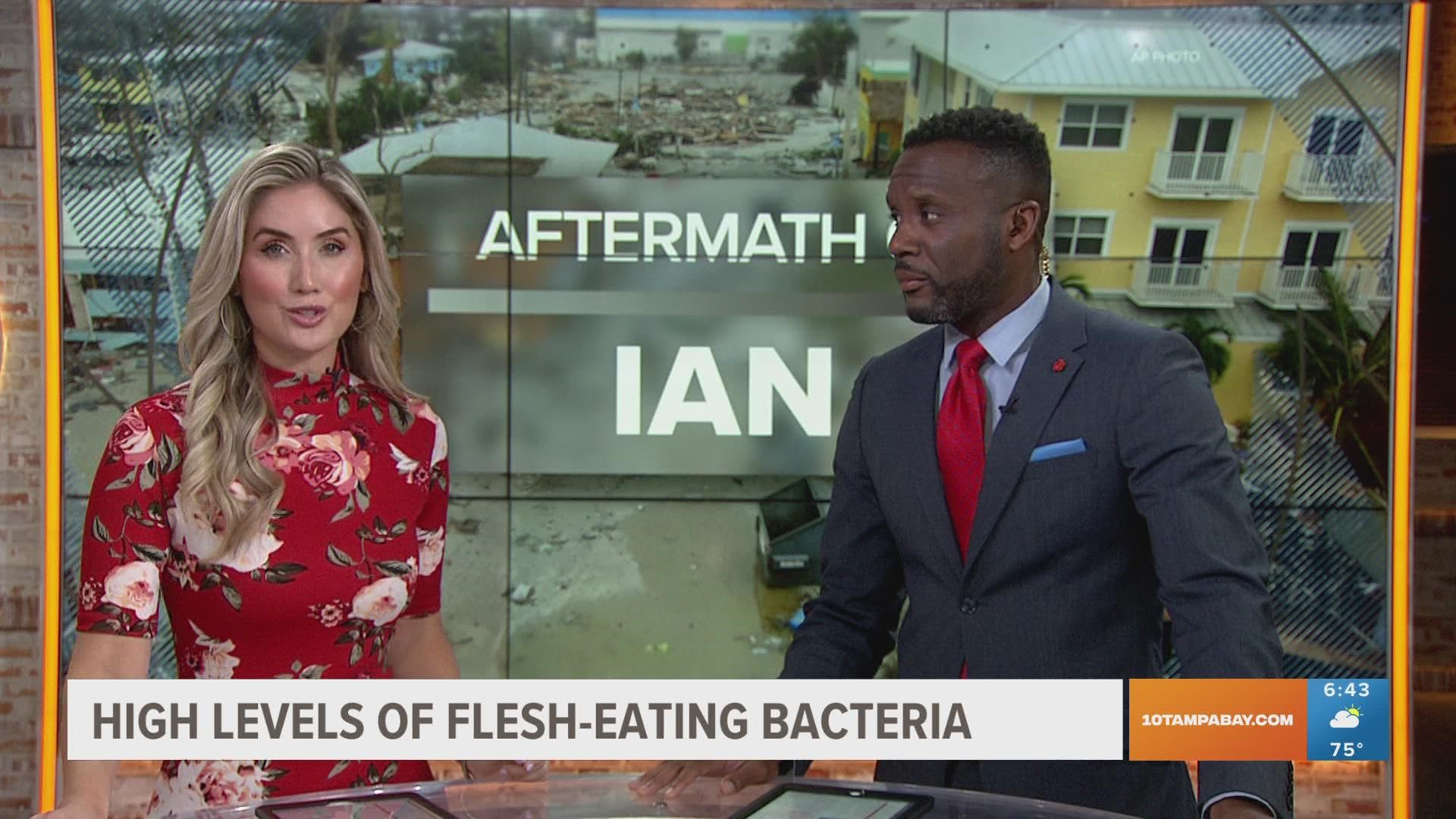LEE COUNTY, Fla. — As recovery from Hurricane Ian continues throughout the hardest hit counties, a new health concern is impacting southwest Florida, according to the Florida Department of Health.
Infections of Vibrio vulnificus — also known informally as a type of "flesh-eating" bacteria — have spiked in both Lee and Collier counties in the wake of Hurricane Ian. Data from FLDOH shows Lee County has reported 29 cases and four deaths related to the infectious disease. Three cases have also been reported in Collier County.
In total, so far in 2022, 65 cases and 11 deaths related to Vibrio vulnificus infections have been reported by the FLDOH. The number is nearly double that of the last two years. It's a record-breaking high compared to past years' data.
In fact, the last time infections and deaths from the bacteria were high occurred in 2017 after Hurricane Irma, according to USA Today.
However, it's important to note infections of Vibrio vulnificus are generally rare. The bacteria are usually found in warm, brackish seawater and typically grow faster during warmer months and whenever there are sewage spills into coastal waters.
That's exactly what happened during Hurricane Ian, which prompted the Lee County health department earlier this month to issue a risk reminder about the infectious disease.
Generally, the "flesh-eating" bacteria become a greater risk to people who get into sea or brackish water while they have an open wound, cut or scratch. It can also cause illness in people who eat raw or undercooked oysters and shellfish.
"Vibrio vulnificus can invade the bloodstream, causing a severe life-threatening illness with symptoms like fever, chills, decreased blood pressure (septic shock), and blistering skin lesions," the FLDOH said. The disease is not spread from person to person.
If the bacteria enters the bloodstream, it has the potential to cause sepsis, which happens when an infection triggers an extreme immune response that leads to organ failure and sometimes death, CBS News explained. Early symptoms include fever and chills, while the illness in its later stages can cause a drop in blood pressure and blistering skin lesions.
The people most at risk are those who are immunocompromised and had direct exposure to contaminated water, the FLDOH said.

